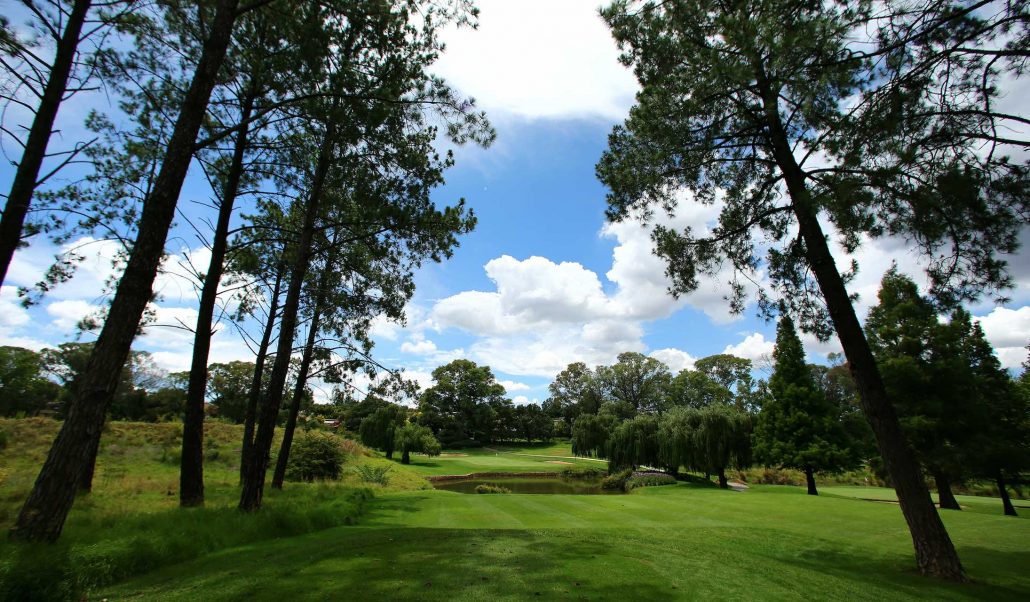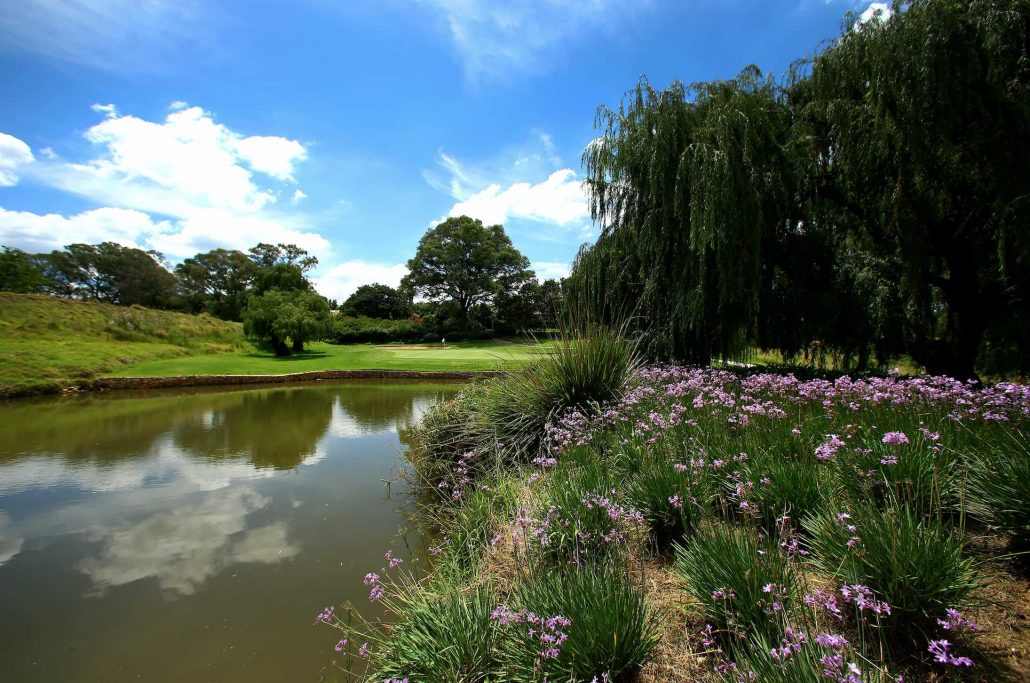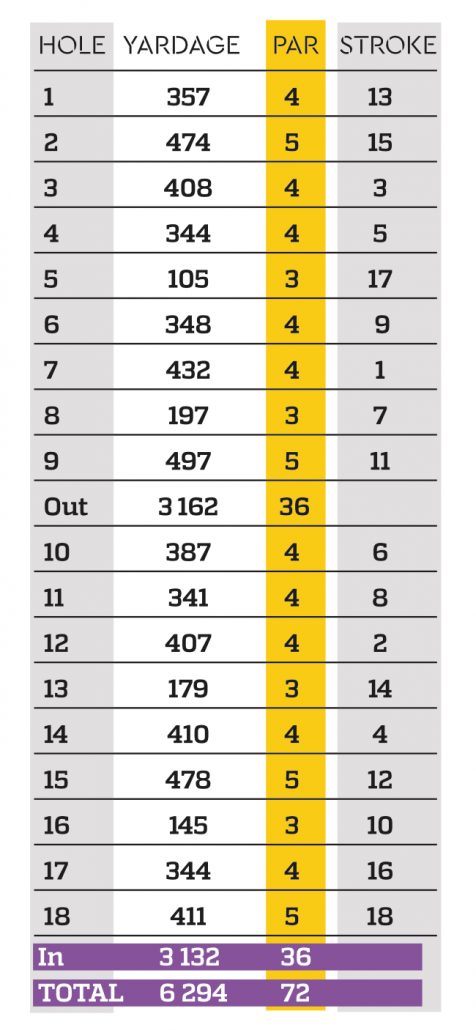While the Royal Johannesburg and Kensington ‘big brother’ East Course often gets more attention, the West layout is a delight, writes BEN KARPINSKI.
When it comes to a world-class parkland golf experience, Royal Johannesburg and Kensington is a standout location on the South African landscape. The club has hosted a wide variety of local and international amateur and professional events, with the East Course being a marquee attraction of which the members of the club are particularly proud.
But when you speak of the West Course, there is a different level of enthusiasm. Because it is here where you get a golfing experience that allows you to fall in love with the game and, no matter the season, will provide a truly enjoyable way to spend a morning or afternoon.
The story of the Royal Johannesburg and Kensington Golf Club began back in 1890. A privately owned members club where visitors were welcome, the Johannesburg Golf Club was officially founded in 1891, with the present premises being used for golf as early as 1909.
In 1927 the course we know today as the West Course was designed by greenkeeper, club maker and teacher Laurie Waters. After a visit by the Prince of Wales, the Johannesburg Golf Club received its Royal charter in 1931 to become Royal Johannesburg Golf Club. Going from strength to strength, the legendary course designer Bob Grimsdell then created the famed East Course which firmly cemented the club’s position as a premier golfing landmark.
In 1988 the club took the progressive approach of merging with the nearby Kensington Golf Club and the expansion of the member base allowed it to evolve its offerings and facilities. With that it officially become known as the Royal Johannesburg and Kensington Golf Club.
Though the East Course often gets much of the attention, it is testimony to the club that the West Course is as unique and enjoyable. The shorter of the two courses, with more generous fairways and greens, the treelined holes make for a contemporary parkland challenge while still providing the charm that comes with its heritage.
The short par-four 1st hole provides a friendly start, leading beautifully through a thicket of pine trees to reveal the dogleg par-five 2nd which plays up towards the imposing Linksfield Ridge. The surrounds of old trees and rocky outcrops instantly create an intimate feel, which allows you to unwind and forget about everyday life.
Although the course is situated just 15 minutes from OR Tambo International in close proximity to the bustling hubs of Sandton and Rosebank, with easy access to major highways, you feel disconnected from all that with club in hand.
Like most well-designed courses from West’s era, each hole has a certain charm and difficulty to it that is vastly different to the big and brash courses of today.
The 3rd and 4th holes require well-placed tee shots to access greens where water comes into play. Quaint beauty and superb framing of target areas is also a key component of the course, with the short par-three 5th being a picturesque pitch over water to a two-tiered green. The par-four 6th then returns to the horizon of the Linksfield Ridge. It is a superb driving hole which rises up to a green again characterised by an established group of trees providing an idyllic framing of the final target for the hole.
The par-four 7th is a stroke one in the truest sense, requiring a long and precise drive to give yourself a clear shot at a green well bunkered from the front left.
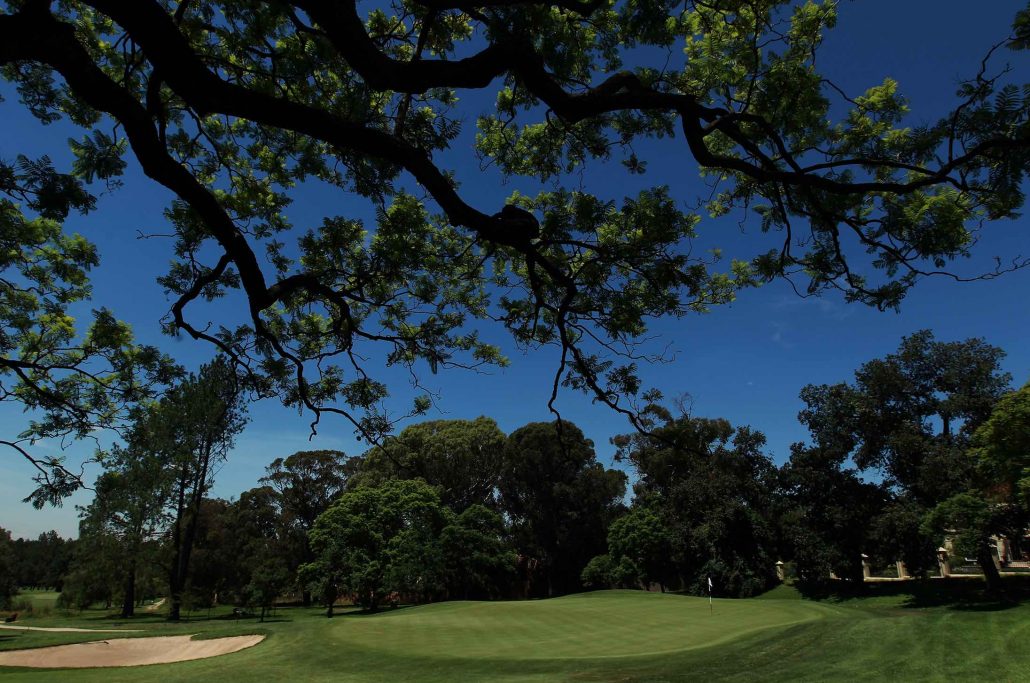
Then the par-three 8th provides a tricky target to hit with a long- to mid-iron, with the tee positioning attracting whatever wind there may be.
The front nine then comes to a more gentle end with a par five that provides a genuine scoring opportunity for the longer hitters who can approach the wide green with an iron in hand.
Played mostly on the lower portion of the course, the back nine has a fair amount of water in play which adds a certain aesthetic, but also some dangers to the scorecard. The par-four 11th is a great example of this where the longer hitter may not need more than a long-iron from the tee for placement as water snakes down the right of the fairway before crossing over to protect the green short and to the left.
Placement is again key on the par-four 12th as trees jut out on to the fairway on the left side, with a lateral water hazard running all the way down the right. This long uphill par four then provides for a raised teeing position for the par-three 13th hole, one where judging the distance is often rather tricky playing from high above a well-sheltered green.
With the noticeable elevation changes behind you, the finishing stretch of holes provide some delightful risk-and-reward situations. The par-four 14th has a generous fairway as the hole moves right to left towards a well-bunkered green.
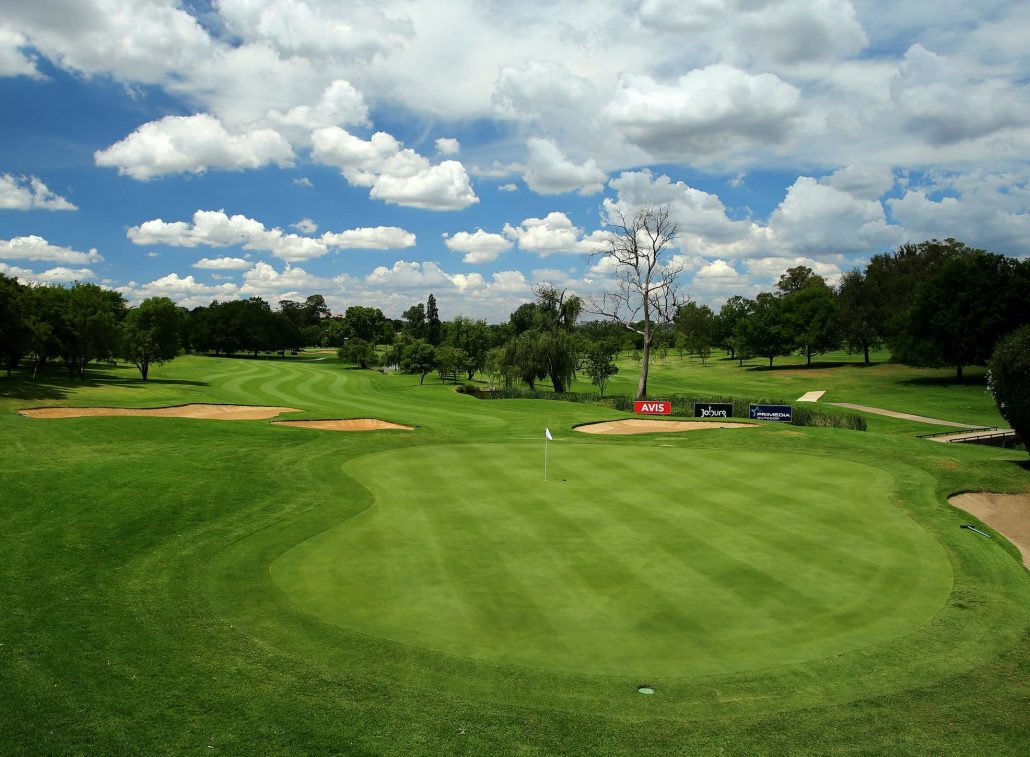
The par-five 15th hole requires a pinpoint drive, with water down the left. Successful navigation of this, though, offers an unbunkered green to which to fire an approach, with a great chance for a birdie.
The par-three 16th is where you need to try to forget about the flag if it is anywhere in the right half of the green luring you towards the water. With a short-iron in hand for the longer hitters, the temptation is often too great, though, and many good rounds have come unstuck with a pushed approach.
There is a huge difference between playing here in the middle of winter and the middle of summer. The par-four 17th, with a hard winter fairway, is a short hole, almost drivable for some. But in summer you take your medicine and focus on placement as the fairway narrows around 260m from the tee. The green is unique in that it has a significant runoff to the left, catching any approach trying to avoid the deep bunker on the right.
The finishing hole then turns you in the direction of the clubhouse with a short par five that defines the nature of the West Course. On paper it is nothing more than a drive and mid-iron for the better player, but anything pushed too far right encounters a thick set of trees which makes the approach to a well-bunkered green often one where pragmatism over power is needed.
The West Course truly is a year-round favourite. It is still receptive in the dry winter months and it’s at its absolute best in the rainy lush summer months, with spring offering all the delights of a new season leading into the blooming of the jacaranda trees. But if you really want a memorable experience on West, the cool autumn months, when the fairways are green and the leaves on the trees start to turn towards a rich brown, is the perfect time to play.
SIGNATURE HOLE
Hole No 5, 105m, par three
Among the standout features of the West Course at Royal Johannesburg and Kensington are the par threes; each different in just about every way, with the 5th hole in particular laying claim to the title of the course’s signature hole.
Chris Bentley, the Royal Johannesburg and Kensington CEO and PGA Professional of the Year 2021, shares his approach to the hole.
‘When it comes to a hole that best defines the West Course, it is without a doubt the short par-three 5th. Playing just over 100m from the club tee, it may seem rather straightforward and easy. But design-wise it just offers so much, starting with the tee box, set among tall pine trees that narrow your focus on to the green.
‘Most players with little more than a wedge in hand will be confident to go at the pin here, but a deceptive two-tiered green with bunkers right, left and rear make this hole a challenge for anyone who underestimates it. Short of the green, water is very much in play with a front-pin position, so ideally a well-judged shot to the middle of the green is the prudent play.
‘Once complete, a short walk up to the par-four 6th allows a view back to the hole which is even more picturesque from this angle. It illustrates what the course is famous for – memorable holes you can’t wait to play again.’
GREENFEES
Club members: 18 holes R330; 9 holes R170
Affiliated members (weekday): 18 holes R520; 9 holes R260
Affiliated members (weekend): 18 holes R690; 9 holes R335
Unaffiliated visitors: 18 holes R800
Affiliated students: 18 holes R420; 9 holes R250
Affiliated juniors: 18 holes R330; 9 holes R200
Golf carts with GPS: Members – 18 holes R380 (9 holes 50%); visitors R420
Golf carts without GPS: Members – 18 holes R360 (9 holes 50%); visitors R400
ROAD DISTANCES
(FROM, ESTIMATED)
Pretoria: 62km
Mbombela: 339km
Bloemfontein: 408km
Kimberley: 479km
Durban: 572km
East London: 973km
Gqeberha: 1,058km
Cape Town: 1,408km
GETTING THERE
From the airport get on the R24 in Isando from Exit 46. Continue on the R24 to Rietfontein 61-lr, Johannesburg. Take Exit 116 from the N3 Eastern Bypass/N3. Continue on the M16. Drive to Fairway Ave in Linksfield North.
GPS CO-ORDINATES
26.1543° S, 28.1073° E
ADDRESS
1 Fairway Avenue
Linksfield North
Johannesburg
2192
CONTACT DETAILS
Tel: (011) 640 3021
Bookings: royal@royaljk.co.za
Website: https://royaljk.co.za


